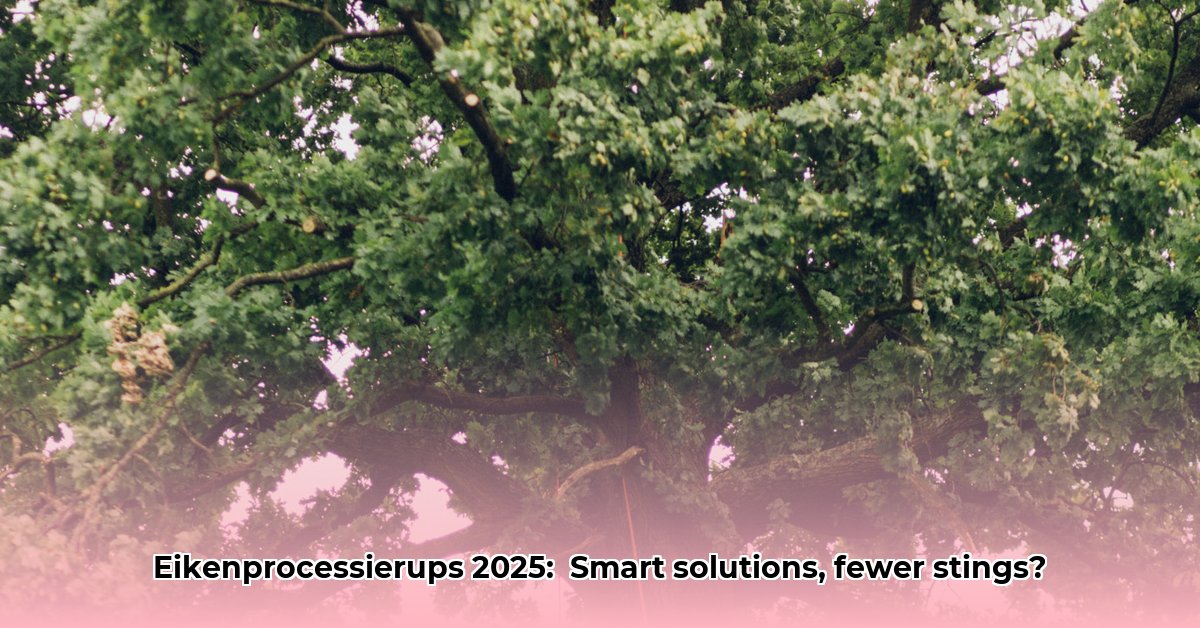
The good news is in: eikenprocessierups (oak processionary caterpillars) numbers took a significant dip in 2025! This means fewer itchy rashes and breathing problems for many. But don't let your guard down completely. These pesky caterpillars, and their irritating hairs, still pose a risk. This guide provides practical steps for individuals, municipalities, and healthcare professionals to manage the remaining risk, combining actionable advice with the latest data.
Fewer Caterpillars, But Still a Hazard
The decrease in eikenprocessierups is largely due to a rise in natural predators like the poppenrover (pupal predator) and a reduction in harsh chemical pesticides. This is good news for the environment! However, the microscopic hairs from even a small number of caterpillars can still cause significant issues. Remember, those hairs can linger, causing skin irritation, breathing difficulties, and eye problems long after the caterpillars are gone.
Taking Action: Prevention and Response
Even with fewer caterpillars, proactive steps are crucial. Here's what you can do:
For Homeowners:
- Avoid Oak Trees: During peak season (June-August), keep your distance from oak trees, especially those with visible nests (fluffy, white pillows).
- Protective Clothing: If you need to be near oaks, wear long sleeves, trousers, a hat, and eye protection (sunglasses or safety glasses).
- Immediate Clean Up: If you suspect contact with caterpillars or hairs, wash your clothes and skin thoroughly with soap and water.
- Family Education: Make sure everyone in your household understands the risks and how to stay safe.
- Nest Identification: Learn to recognize eikenprocessierups nests. Visual guides are widely available online.
- Strategic Landscaping: Planting alternative trees and shrubs might discourage caterpillars. Consult a local nursery.
For Municipalities:
- Regular Monitoring: Closely monitor oak tree populations and caterpillar numbers to assess risks and guide responses.
- Nature's Helpers: Support natural predators by promoting healthy habitats. This eco-friendly approach is more sustainable than chemicals.
- Community Awareness: Run proactive public awareness campaigns about eikenprocessierups risks and preventative measures.
- Long-Term Strategy: Develop a comprehensive plan that considers climate change and potential shifts in caterpillar populations.
For Healthcare Professionals:
- Updated Guidelines: Ensure your practice has clear protocols for diagnosing and treating eikenprocessierups-related issues.
- Knowledge Updates: Stay informed on symptoms, treatments, and the latest research. Continued professional development is key.
- Resource Management: Keep adequate supplies readily available to manage reactions effectively.
- Interprofessional Collaboration: Work with veterinary professionals to address eikenprocessierups concerns in pets.
Managing Nests: A Practical Guide
Even with reduced numbers, dealing with nests safely is still important.
Assessing the Situation:
A few nests? You might handle this yourself (following safety guidelines below). Many nests? Calling in professionals is safer and more efficient.
Safe Nest Removal (Small Infestations Only):
Remember: Safety is paramount! Always wear protective clothing: a full-body suit, gloves, goggles, and a respirator.
- Timing: Select a calm, dry day; wind makes removal more difficult and risky.
- Equipment: Gather long-handled shears or pruning saws, thick plastic bags (double-bagging is best), and a sturdy ladder if needed.
- Removal: Carefully cut the branch with the nest and gently lower it into your bag. For high nests, secure the bag to a long pole.
- Disposal: Seal the bag tightly and dispose of it according to local regulations (usually incineration). Never compost or leave it exposed.
- Clean Up: Thoroughly clean all tools and surfaces that came into contact with the nest and hairs.
Professional Assistance:
For substantial infestations, contact pest control professionals. They have the expertise and equipment to remove nests safely and effectively.
Long-Term Strategies: Prevention and Mitigation
Preventative measures are crucial. Consider strategies like endotherapy—injecting trees with preventative solutions—to reduce the risk of future infestations. This is a more sustainable, long-term approach than simply reacting to problems as they arise.
"Endotherapy offers a proactive approach, minimizing the need for reactive measures and promoting the long-term health of oak trees," says Dr. Elsabe Kruger, entomologist at Stellenbosch University.
Risk Assessment and Conclusion
Even with the reduced numbers in 2025, vigilance is key. By implementing these preventative measures and responding appropriately, we can significantly reduce the impact of eikenprocessierups and enjoy our outdoor spaces safely. Remember, preparedness and careful action are your best allies against these pesky caterpillars.